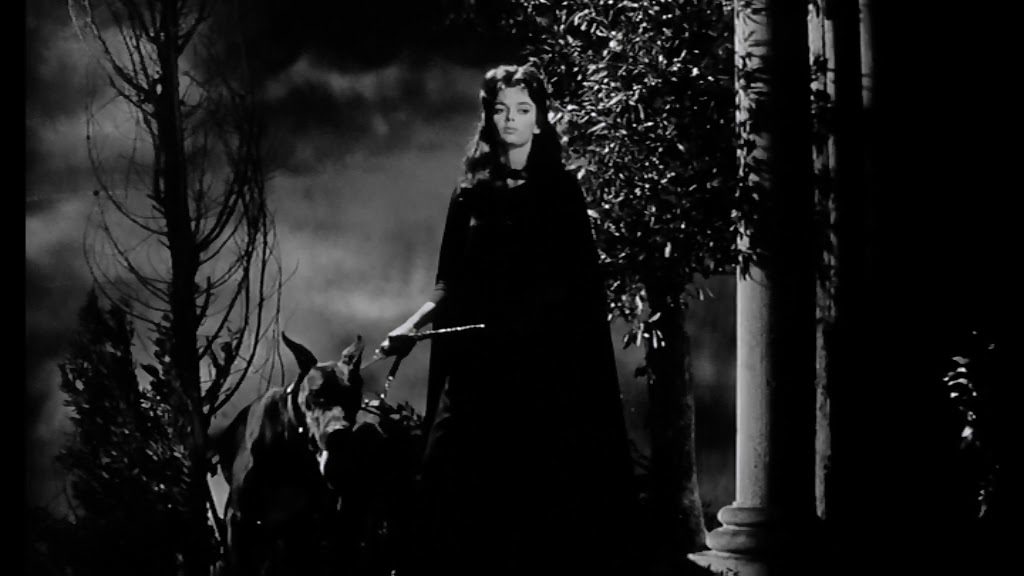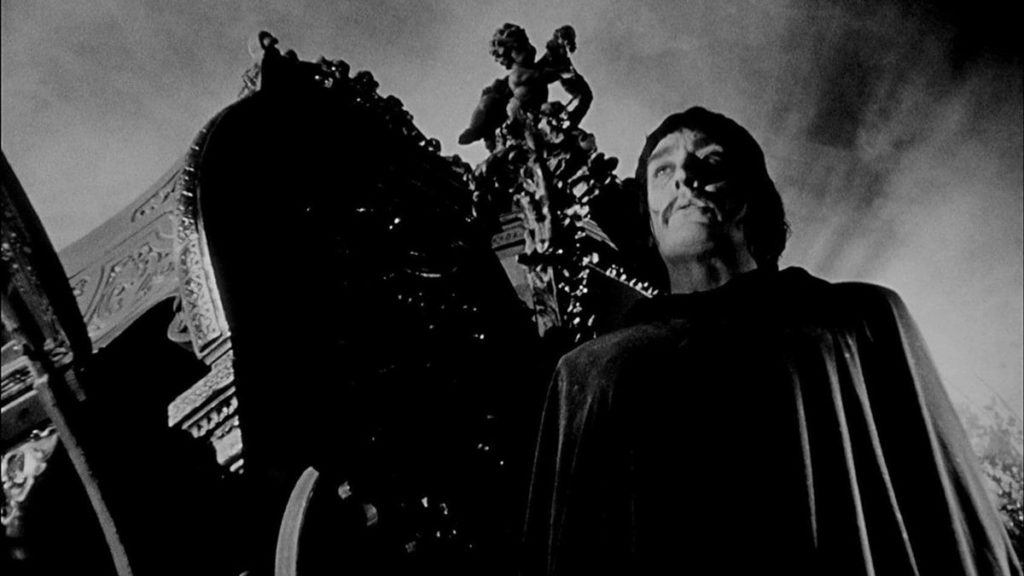When Johann Koehler and I were younger and full of energy, we devoted each October to scary movie recommendations, knocking out 4 or 5 every Halloween season. In these straitened times, dear readers, I hope you can survive on one. At least it’s a goodie, namely the 1960 film that put Mario Bava on the map: La Maschera del Demonio.

The story opens with a witch (Barbara Steele, in the role that launched her as a genre star) being burned at the stake by a mob of pious, torch wielding, medieval villagers who seem like many other things in this movie to have escaped from a 1930s Universal monster picture (which Bava visibly loves as much as anyone). In a horrific sequence, they brand her with Satan’s mark and then nail a metal mask on her face and also on that of her malevolent henchman. She of course promises that she will rise again to take vengeance. Centuries later, two men stumble into a crypt and discover an ancient stone coffin and, well, you can guess much of the plot from there (again, especially if you watched the 1930s Universal monster movies).
Bava had done uncredited directing by this point in his career, but was mainly known as a cinematographer. Here, he is officially the director, and turns in one of the most atmospheric, visually stunning entries in the horror genre. He respectfully echoes the classics but adds his own sensibility and enormous technical skill to create a landmark in the genre and in Italian cinema more generally.

The best way to recommend La Maschera del Demonio might be to simply post dozens of photos. Part of why Bava influenced so many directors was his world-class visual sense: where to put the camera, where and when to move it, and how to create images that rivet an audience. In this respect, La Maschera del Demonio recalls two earlier RBC film recommendations in the horror/thriller genre, Les Yeux Sans Visage and Vampyr. The movie is also flat out scary, with suspenseful moments where you want to look away yet also can’t not watch.

There are multiple versions of this film, for two reasons. First, some of the violence — jolting even by today’s standards — was edited out in some countries (indeed, the UK banned the film entirely). Second, it’s an Italian film, so there was no sound recording on set. The actors were likely speaking different languages, and the language for each target audience was inserted in post-production (The multiple English “dubbed” versions of the film are pretty smooth, so it appears that many of the actors were doing their lines in that language on set). Probably the best version to watch is the completely unedited Italian language version, but the next best is the only slightly edited US version that Samuel Z. Arkoff and Roger Corman released under the titles “Black Sunday” and “Mask of Satan”. You can legally watch that version legally and for free right here.